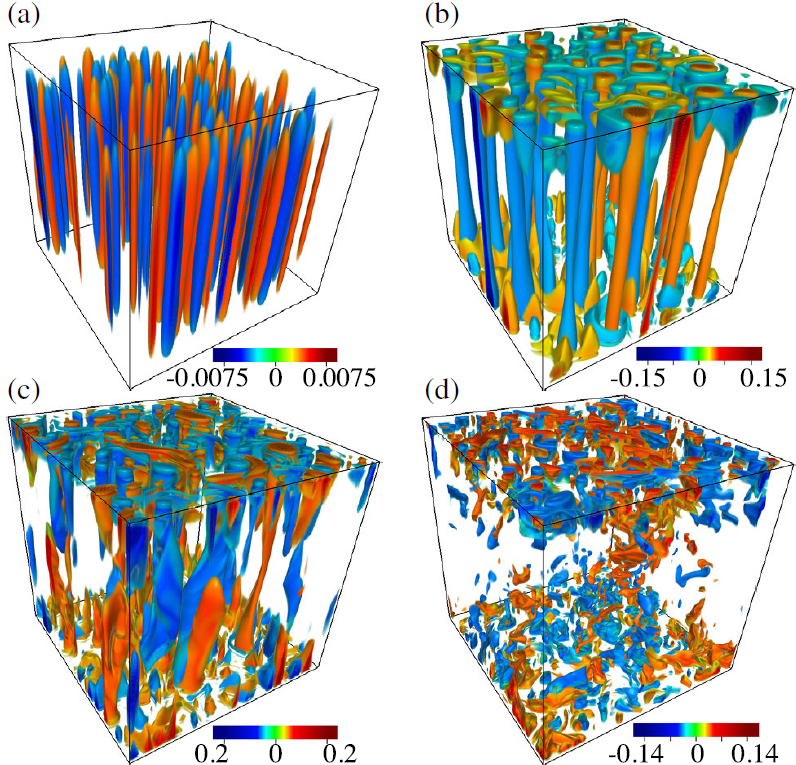Description and Aim
Thermal buoyancy is arguably the largest dynamic force in the universe. In many geophysical and astrophysical systems, rotation is another major ingredient in determining the heat transport mechanisms and their efficiency. The accurate description of the interplay of thermal buoyancy and rotation is thus a critical one for understanding and predicting the behavior of a huge range of physical phenomena with important implications, for example, in weather, climate, and even space weather. Because of the enormous complexity of geophysical and astrophysical systems, the complementary approaches of laboratory experiments, numerical simulations and theoretical analysis are essential for progress in the modeling of physical states that balance rotation and buoyancy.
Recently, these questions have come to the forefront as theoretical, numerical, and experimental tools have opened up a new and exciting frontier of inquiry into the study of rotating thermal convection. It is possible to derive an asymptotic theory of rotating convection that assumes that both rotation and buoyancy become infinitely large but that the balance is maintained such that rotation dominates buoyancy and for which the thermal convection is in a state of geostrophy, namely that lateral pressure gradients are balanced by Coriolis forces. This idea has focused recent numerical simulations and experimental research on characterizing the heat transport efficiency and identifying the agents for carrying the heat in regions of active convection with dominant rotation control. Experimentally, this is a challenging regime to access and numerically the requirements that resolve very thin kinetic layers (Ekman layers) and thermal layers are daunting as well. It is the convergence of these approaches and their different advantages and limitations with the new asymptotic theories that promises real progress on this challenging problem of wide ranging impact.
Connecting the recent advances on theory, experiments and numerics with the real geophysical and astrophysical remains a significant challenge and opportunity. Through a core group of interdisciplinary participants, we will address the key questions confronting the field. In particular, these will include:
1. How is heat transport controlled in the geostrophic regime of convection?
2. What are the prospects for determining heat transport efficiency and convective structures in laboratory experiments?
3. How do we connect the theory, experiments and numerics to geophysical and astrophysical systems of considerable additional complexity and with dimensionless numbers that are much larger than those achievable in the experiments or numerical simulations?


